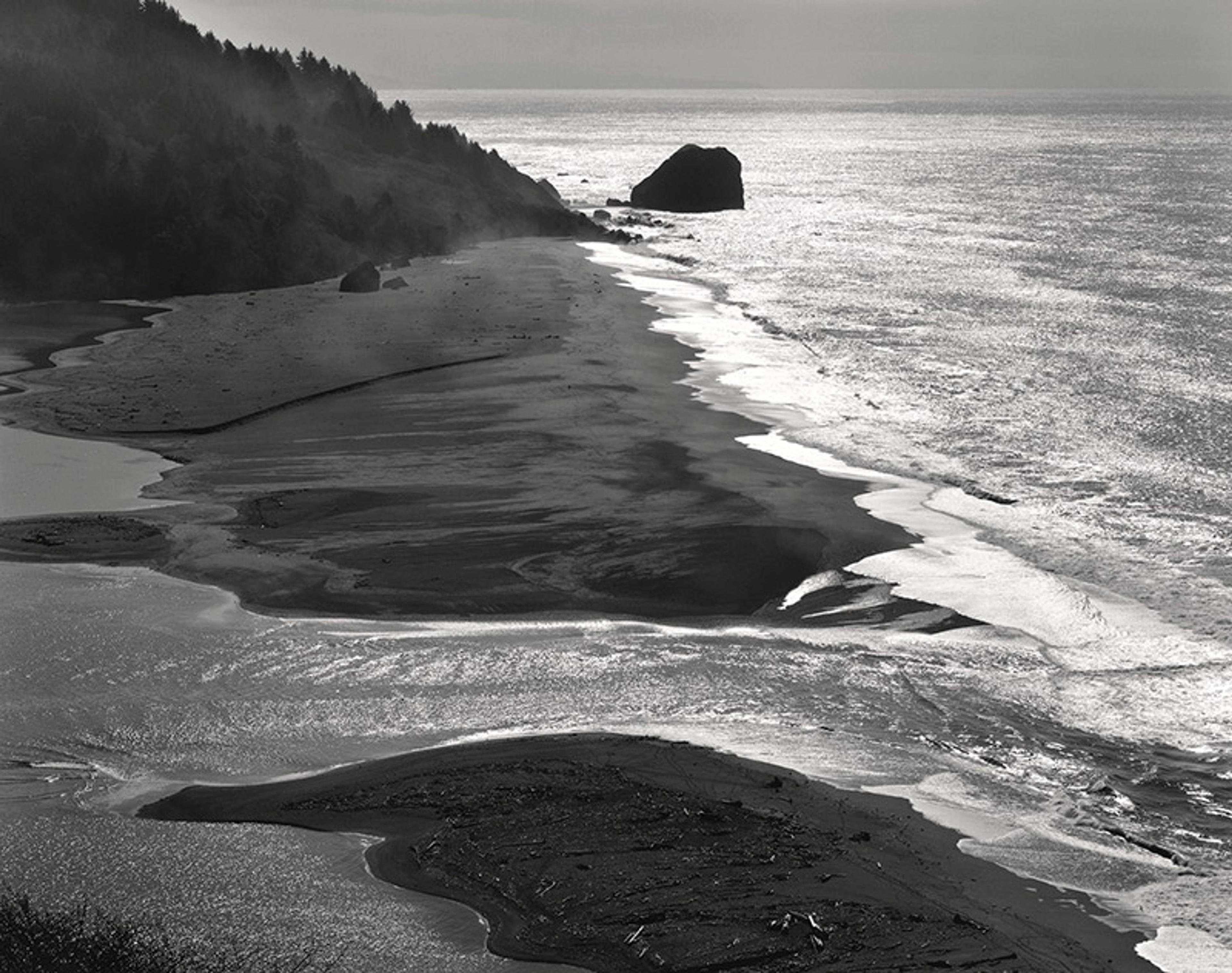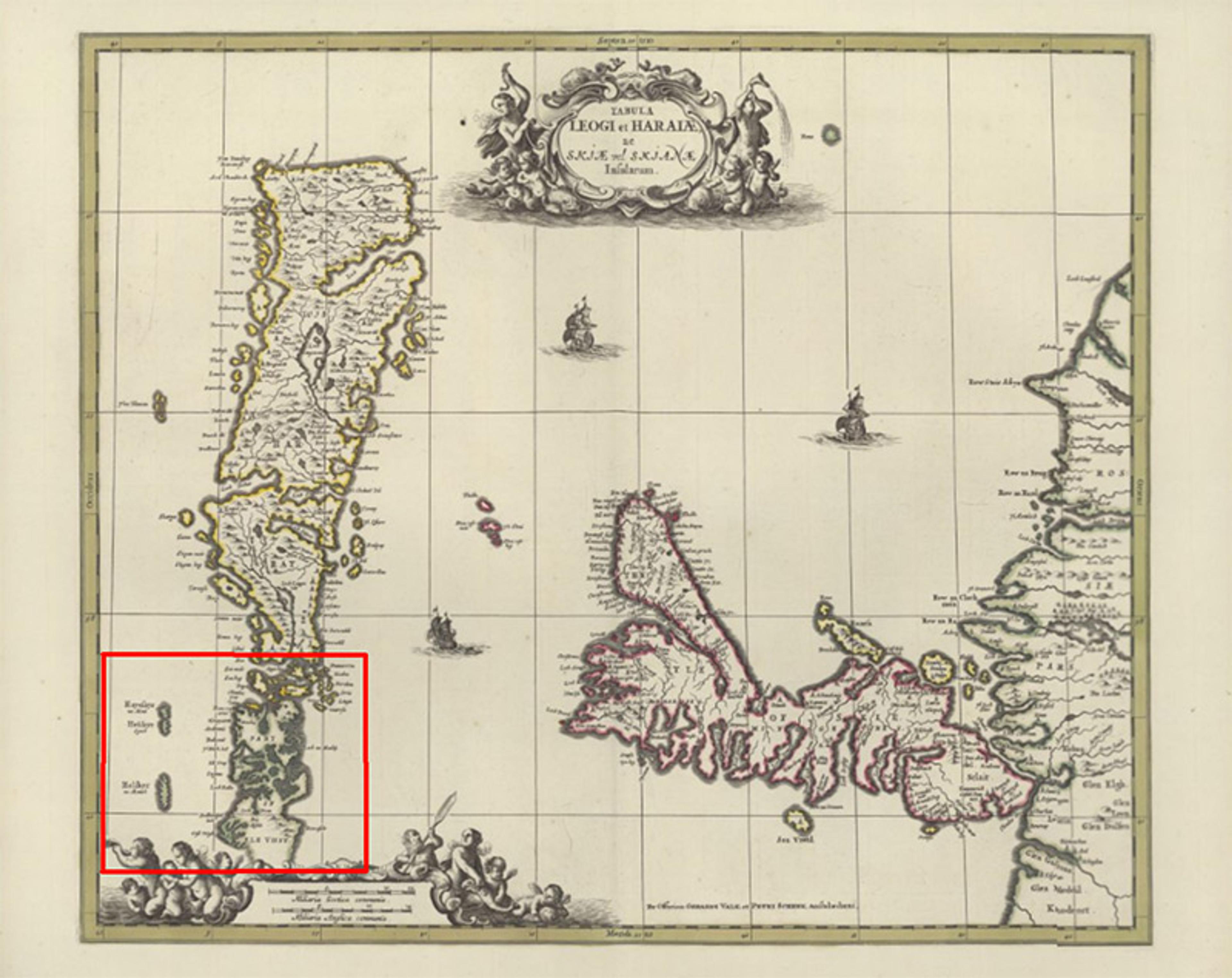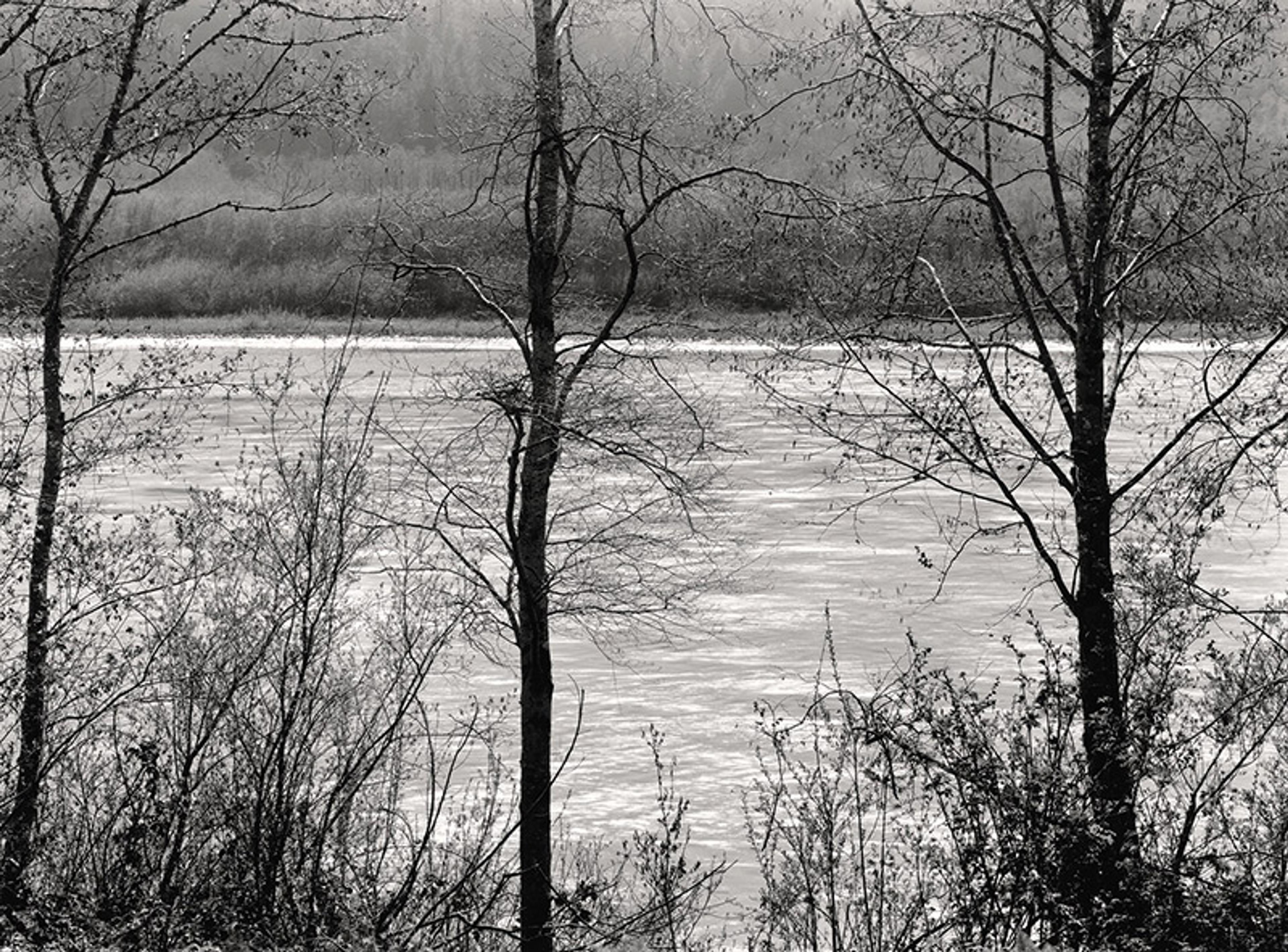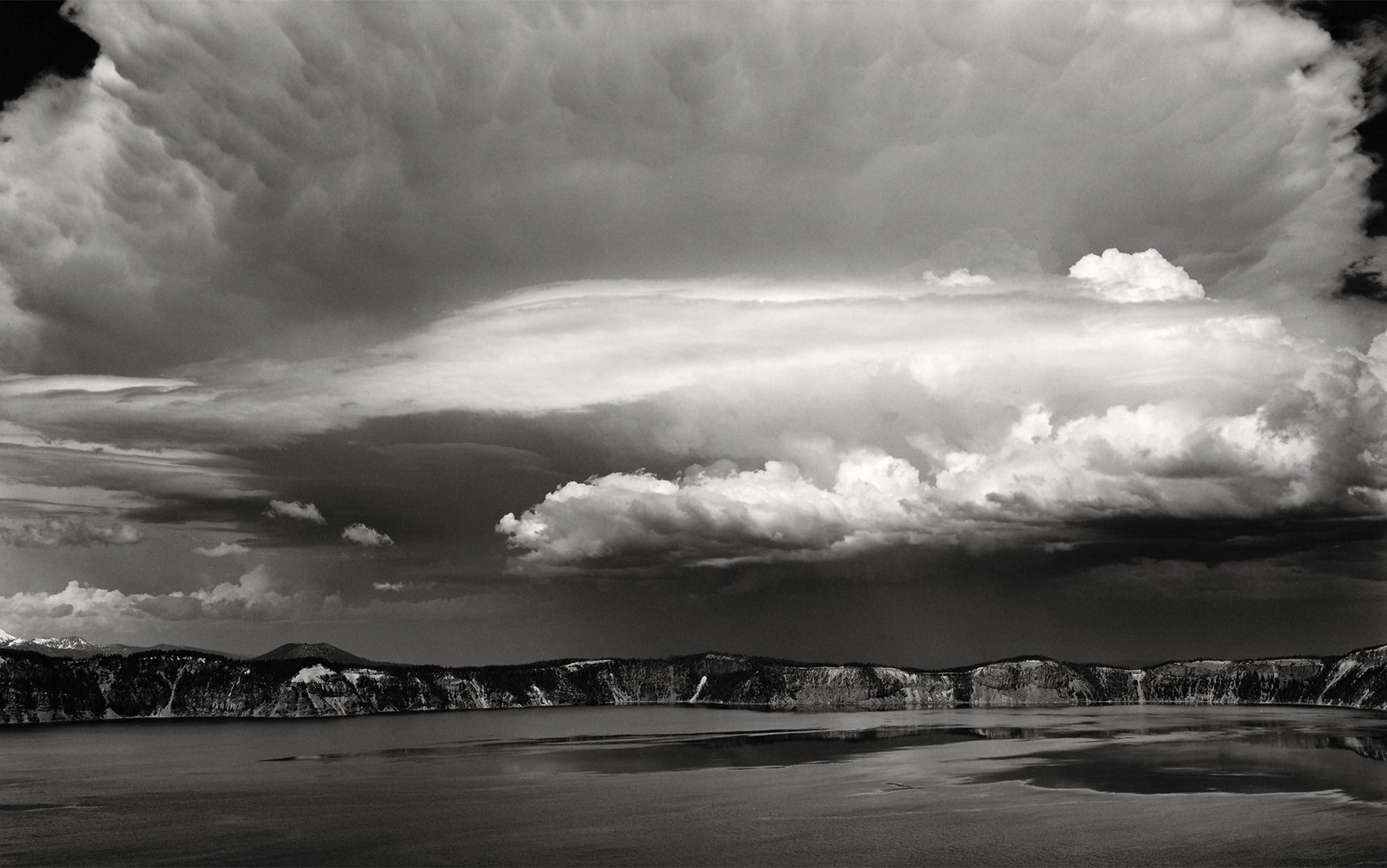In the 1880s, the American journalist William Gladstone Steel made several visits to a freshwater lake that filled the caldera of an extinct volcano in Oregon. For Steel, these visits were the fulfilment of a dream that began while he was just a schoolboy in Kansas. It was one day in 1870, while reading the newspaper wrapped around his school lunch, that he noticed an article about the ‘discovery’ of a spectacular body of freshwater named Crater Lake. ‘In all of my life,’ Steel would later recall, ‘I never read an article that took the intense hold on me that that one did…’ When he finally made it to the lake in 1885, he was so captivated that he determined to have the area designated as a National Park. But designation was not easily gained and required extensive documentation of the region.
To help with the reconnaissance, Steel engaged guides from the local Klamath peoples, who had occupied the area for countless generations. During their work together, Steel noted that they never once looked at the lake itself, instead ‘making all sorts of mysterious signs and staring directly at the ground’ – a sign that the Klamath regarded Crater Lake as a powerful place where a great cataclysm once happened and might happen again. For, as Klamath stories tell, buried deep beneath the lake waters is the spirit of Llao, a demon who lived within the volcano that once towered above Crater Lake. In a past age, Llao terrorised the Klamath by showering them with hot rocks and shaking the ground on which they lived. This continued until Llao was confronted by the benevolent spirit Skell who pulled the volcano down on the demon and created Crater Lake above.

What sounded to Steel like myth is more than just a story. It is a memory of an eruption that caused a volcano to collapse and form a giant caldera that, as many do, filled with freshwater. The eruption occurred 7,700 years ago, but the Klamath had preserved its story and even sustained associated protocols, such as not looking directly at the lake. Though they did not read nor write when Steel worked with them in the late 19th century, the Klamath people knew a story about an event that had occurred more than 7 millennia earlier, a story carried across perhaps 300 generations by word of mouth.
Many literate people today believe this kind of thing is impossible or, at best, an anomaly, because they evaluate the abilities of oral (or ‘pre-literate’) societies by the yardsticks of literate ones, where information seems far more readily accessible to anyone who seeks it. And, in doing so, they undervalue the ability of these oral societies to store, organise and communicate equivalent amounts of information. I have called this ‘the tyranny of literacy’: the idea that literacy encourages its exponents to subordinate the understandings of others who appear less ‘fortunate’. But accounts like Steel’s are beginning to help break apart this idea: oral traditions, rather than being subordinate, are capable of transmitting just as much useful information as the technologies of reading and writing.
In the early 20th century, the French ethnographer Arnold van Gennep spent considerable time familiarising himself with Indigenous Australian (Aboriginal) oral stories, concluding that these include ‘fragments of a catechism, a liturgical manual, a history of civilisation, a geography textbook, and to a lesser extent a manual of cosmography’. While later research has documented the nature of this more fully than Gennep realised, especially in the fields of star knowledge and land management, the focus has shifted recently to those types of Aboriginal knowledge for which an extraordinary longevity can be unequivocally demonstrated.
Some of the most compelling examples are of volcanic eruptions like Crater Lake in Oregon, which can often be dated with high precision. These eruptions then become proxies for the age of associated oral traditions. Take the example of the eruption that caused the formation of Australia’s maar crater in which Lake Eacham (northern Queensland) now lies, an event described by local Dyirbal-speaking residents as follows:
The camping-place began to change, the earth under the camp roaring like thunder. The wind started to blow down, as if a cyclone were coming. The camping-place began to twist and crack. While this was happening there was in the sky a red cloud, of a hue never seen before. The people tried to run from side to side but were swallowed by a crack which opened in the ground.
Our best estimate for the formation of this volcano – and therefore the narrative describing this event – is a little more than 9,000 years ago. A few hours’ drive southwest from Lake Eacham brings you to the volcano of Kinrara, estimated to have last erupted around 7,000 years ago. The local Gugu Badhun people have stories about this event, about how the river courses filled with fire – memories of lava flows – and how people were engulfed by ‘dust’ and asphyxiated, details of a kind that retrodictive science is powerless to deduce.
More widespread in Australia are Aboriginal stories of coastal submergence, now known from more than 30 locations all around the continent, that are plausibly interpreted as memories from more than 7 millennia ago when the ocean surface was much lower than today, when shorelines were kilometres – sometimes tens of kilometres – further seawards than today, and when today’s islands were contiguous with the mainland.
We have solid evidence from two contrasting contexts of submergence memories from 7 millennia ago
People arrived in Australia around 70,000 years ago, long before the coldest time of the last great ice age when the ocean surface was more than 120 metres lower than it is now, a result of the storage of ocean water within thick ice sheets that once blanketed many continents. When the ice age ended, the land ice started melting, causing the sea level to rise along most of the world’s coasts. This rise continued for 10,000 years or more, and caused massive and ongoing disruption to people living in these places. We now know of ‘submergence stories’ from northwest Europe and elsewhere, including Scottish ‘myths’ about post-glacial coastal change, but it is the Australian Aboriginal stories that generally contain the greatest detail.
Consider the account of the Lardil storyteller and artist Dick Roughsey (Goobalathaldin) who explained how ‘in the beginning, our home islands, now called the North Wellesleys [Gulf of Carpentaria], were not islands at all; but were part of a peninsula running out from the mainland … the Balumbanda people came along that peninsula long before it was cut up into islands’, an event estimated to have occurred more than 7,000 years ago. A remarkable parallel from the other side of the world comes from the Monach Islands in the Outer Hebrides of Scotland. Here, oral traditions collected in the 1860s included stories about times when these islands were connected to the neighbouring island of North Uist:
owing to the gradual dislodgment of the friable sand forming the isthmus, the isthmus by degrees gave way to fords, and the fords broadened into a strait … tradition still mentions the names of those who crossed these fords last, and the names of persons drowned in crossing.
The best estimate for the existence of an isthmus connecting the Monach Islands to North Uist is also around 7,000 years ago. So we have solid evidence from two contrasting geographical and cultural contexts of memories recalling land-bridge submergence events 7 millennia ago – memories that were, until recently, remembered through oral traditions. Though referring to events from millennia ago, these memories were not difficult to recall: in the 1970s and ’80s, Roughsey filled books with his people’s oral traditions; Mary Mackay, the chief informant for the Hebridean stories, was clearly also loquacious, rendering her ‘vivid’ tales in ‘felicitous Gaelic’ according to Alexander Carmichael, the folklorist who collected them during the 1860s.

These tales of rising oceans are not mere stories. Despite occasional embellishment, their empirical skeletons are easy to recognise. Is it likely that our ancestors across the world sat around inventing stories about times when two landmasses were joined, and insisted on communicating these improbable fictions downstream along the river of history? Or is it more probable that these stories were passed along because people remembered an event so foundational to local history that it was considered hugely important to communicate to each new generation?
Of course, in contexts where there has been considerable mixing of cultures, some of these stories have become mythologised – populated by supernatural beings capable of feats no human could match. Take the example of the giants who feature in myths and legends in every part of the world. Imagine you are trying to tell your ancestral story about how Ireland was once connected to Scotland and Wales, or how Tasmania was formerly contiguous with mainland Australia. Your audience looks sceptical, so you rationalise your tale, stating that in the old days people were giants, which is how they were able to stride across the expanses of water that people could see. Your audience is satisfied and interest in your story has been recharged, ensuring it will be retold. But your story has also been transformed, from narrative to myth, ensuring that it will be regarded as a fanciful or puerile invention dismissed, millennia later by literate people, as having any value beyond entertainment.
These ‘myths’ are not fiction. Most of the ancient myths of long-established cultures have an empirical core. They are not inventions but observations, filtered through worldviews from potentially thousands of years ago and clothed with layers of narrative embellishment before they reach us today. Framed within the science of their day, they represent knowledge often from times far earlier than those in the world’s oldest books.
The ‘tyranny of literacy’ makes us sceptical of knowledge being retained in oral societies for such a long time
The Victorian-era archaeologist O G S Crawford, an irascible, unconventional yet hugely influential figure, pondered the veracity of these ‘myths’ with characteristic forthrightness. His focus was on the stories of the ‘lost land’ of Lyonesse off the southwest tip of England. In the inaugural issue of the journal Antiquity (which he founded in 1927), Crawford asked whether ‘the famous legend of Lyonesse … had … any real basis in fact, or is it merely an invention of the “dreamy Celt”?’ Crawford found ‘good reasons for believing that the substance of the legend is true’ but it is hard to find many people since who have agreed with him. Most commentators conclude Lyonesse to be an ‘imaginary territory’, a place to accommodate historical romance and the birth of nationalist identity – ultimately, it’s seen as a lure for tourists. Few scientists dare admit it to the realm of rationalist thought. Most are hardwired to believe all ‘myth’ and ‘legend’ to have been invented. To them, the case of Lyonesse was apparently a production of ‘dreamy Celts’.
Yet the core of the Lyonesse stories is almost certainly true. They plausibly represent the observations of people living on the Scilly Isles 4,000 to 5,000 years ago when the rapid rise of the ocean turned a single large island into a series of smaller islands, much to the alarm, we can infer, of its inhabitants. The land is unlikely to have been called Lyonesse – that name seems to have been introduced during the Arthurian era around the 6th century – but there is robust evidence that the Scillies were inhabited 8,000 years ago when the archipelago was largely a single island. There is also evidence that people witnessed the gradual fragmentation of that island during the following millennia. It is easy to believe those people told stories about what happened, so why is there resistance to believing such stories survived through millennia of oral tradition? The ‘tyranny of literacy’ makes us sceptical of knowledge being retained in oral societies for such a long time. Yet, as awareness of the empirical foundations of ‘myths’ and ‘legends’ grows, such scepticism seems fated to disappear.
Many of us assume that people in oral societies were unable to access and utilise the amounts of information that we do. But few literate peoples have considered the implications of this assumption: if people who do not read or write cannot store or utilise the knowledge of their ancestors, then we must conclude that we are here today by luck – luck that would have needed to last around 250,000 years, as long as modern humans have stridden across Earth. You may think my views here are extreme. Stories carried across centuries and millennia are one thing, but can these memories really pass to us from much deeper in time?
Many of the longest-enduring human cultures have ancestral knowledge that in some cases is several hundred years old and has undoubtedly been key to their survival. Countless anthropologists and archaeologists have shown that human societies can retain knowledge for centuries, pointing to the reciting of genealogies as a common example. But survival requires more than lists. It requires people to understand their deep geographical and historical context, their place in the world and how to sustain it. I suggest that our distant ancestors and their societies were no less risk-aware and risk-averse than we are today. Their underlying goal was for their bloodline to endure, which is essentially why today we educate young people, teaching them reason, giving them an understanding of the world they inhabit so they might survive. Reason does not depend on books but on acquiring and processing knowledge from whatever sources are available and are best aligned with what we need to know in order to survive.
My earliest encounters with people who could neither read nor write (and nor, in this case, speak English) were in the Pacific Islands where I lived and worked for more than two decades. As a geologist, my research took me to some of the remotest corners of the Pacific region, where my self-belief as a conventional scientist gradually eroded and was replaced with an appreciation of other worldviews equally as valid as that with which I had been inculcated. I also became disabused of the belief – held by most Western-educated literate people – that orality is inferior to literacy. As carefully explained by Walter Ong in his classic book Orality and Literacy: The Technologizing of the Word (1982), not only has literacy transformed human consciousness, shifting it from sound-focused to sight-focused, but is has also ‘weaken[ed] the mind’. For, as Ong wrote: ‘Those who use writing will become forgetful, relying on an external resource for what they lack in internal resources.’ Plato’s Socrates noted the same thing, arguing that writing ‘destroys memory’, something that sustained oral societies in every part of the inhabited world for tens of thousands of years.
If there was a pivotal moment in my journey towards an awareness of the depth and breadth of oral knowledges, it was late one afternoon in 2004 when, with some colleagues from the Fiji Museum, I started a conversation with Maikeli Rasese at his home in Denimanu Village, the only settlement on Yadua Island in northern Fiji. We wanted to learn something about the human history of Yadua, of which he was a foremost authority. He described each coastal embayment in turn, relating the stories of the people who occupied it over the past few generations, along with eventful moments in its history, such as a shipwreck, a tidal wave, even the heroic repulsing of invading forces. None of this was written down. All of it was in his head. And all came from his lips in perfect order, fluently, just as though he had been reading from a text in front of him.
I had been privileged to witness the expounding of ‘oral traditions’ at their best
After a few hours, as we neared the end of our narrative circumnavigation of Yadua – not, by any measure, a large island – I assumed we would shortly conclude our evening. But Rasese was not finished. Having exhausted his historical knowledge of the island, he then proceeded to explain where its people had come from originally, how they had abandoned their previous homes on other islands because of growing aggression from new arrivals, and how others of their clan had dispersed but remained in touch, periodically renewing their ties, sometimes through intermarriage, sometimes through the ritualised exchange of traditional valuables. It was 2 am when, seeing his audience drooping with fatigue, Rasese finally ended his storytelling.
The next day, while contemplating the voluminous notes I had made that evening, I realised that I had been privileged to witness the expounding of ‘oral traditions’ at their best. This is how it had once been for every group of humans on Earth. Telling these stories was how we optimised our chances of survival, a successful strategy for making sure every new generation was aware of everything the previous generation had known.
Under optimal conditions, oral societies were able to pass on knowledge in a coherent form across hundreds of generations to reach us today. We know that oral memories of volcanic eruptions go back more than 7,000 years in several instances; numerous stories of coastal submergence (attributable to post-glacial ocean rise) are likely to be of a similar age, some perhaps more than 10,000 years old. The edge of memory is indeed a time horizon of extraordinary antiquity, one that gives us renewed respect for our pre-literate ancestors in every part of the world.

Half a century ago, people might remember 10 or 20 telephone numbers, but today how many? Smartphones have almost removed any need to remember phone numbers, birthdays, addresses or even names. These developments can make life easier, no question, but they also encourage us to undervalue what we have lost.
Humans have a deep-rooted affection for narrative that, I suggest, was born long ago in oral societies. In those times, listening to the stories of your elders was mandatory, not optional. If you didn’t listen, you couldn’t learn. And if you didn’t learn, you wouldn’t likely survive. So strong was the communal will to survive, that everyone learned – there was no choice. People in oral societies learned to be attentive listeners and, later in life, habitual storytellers.
But good storytellers don’t just tell stories. They do whatever they can to engage their listeners, something that applied as much thousands of years ago as it does today. Storytellers perform, they sing and dance, they mimic and entertain. And therein lies the deep roots of what has been ringfenced in today’s literate societies as theatre, poetry, dance and even art. It seems clear that ancient rock art, for instance, had little to do with beauty (although today we often laud its aesthetic qualities) but everything to do with practical wisdom. Such art, it seems, provided memory aids for knowledge-holders, perhaps to populate particularly difficult-to-remember details of important stories. Literate people inherited these things from their pre-literate ancestors but repurposed them as cultural creations, not knowing what else to do with them.
Where does that leave us, today? In contemplating the extraordinary longevity of oral traditions, I think it is key to consider the importance of context. It seems obvious to suppose that people learn better when they are relaxed, in an environment where they feel comfortable, where they and their peers are eager to learn. One of the scholarly works that influenced my thinking on this was Polly Wiessner’s insightful research about the cultural impact of gathering around a fire at night. She suggested that firelight extended group interactions into the night, creating new opportunities for ‘singing, dancing, religious ceremonies, and enthralling stories’ that laid the foundations for the creation and communication of oral traditions. Most of us have felt this: there is something primeval about staring into the night-shaded face of a tamed fire, aglow and crackling. It opens a conduit to the past.
Perhaps the greatest lesson we can learn from the nature of ancient stories is that we have been here before, confronting an enduring and profound challenge from climate change that is likely to force major changes to the ways most of us live. But we can take some comfort from the fact that our ancestors survived something comparable: 10,000 years of rising temperatures and rising sea levels that followed the end of the last great ice age, forcing changes in coastal geographies to which people had no option but to adapt. Our ancestors survived, as did some of their stories, which record their experiences of adaptation as familiar places were submerged and landmasses broke into islands. We too shall survive, nurturing stories that will one day, thousands of years from now, help our descendants to survive. That is the way of this world.
This essay develops ideas discussed in Patrick Nunn’s books The Edge of Memory: Ancient Knowledge, Oral Tradition and the Post-Glacial World (2018) and Worlds in Shadow: Submerged Lands in Science, Memory and Myth (2021), both published by Bloomsbury.






